This is a free fortnightly newsletter about the New Zealand Net.
If you would like to be notified by email when a new edition is published, please contact ZL1NZ.
Browse our Newsletter Archive and List of Net Tips.
Featured key
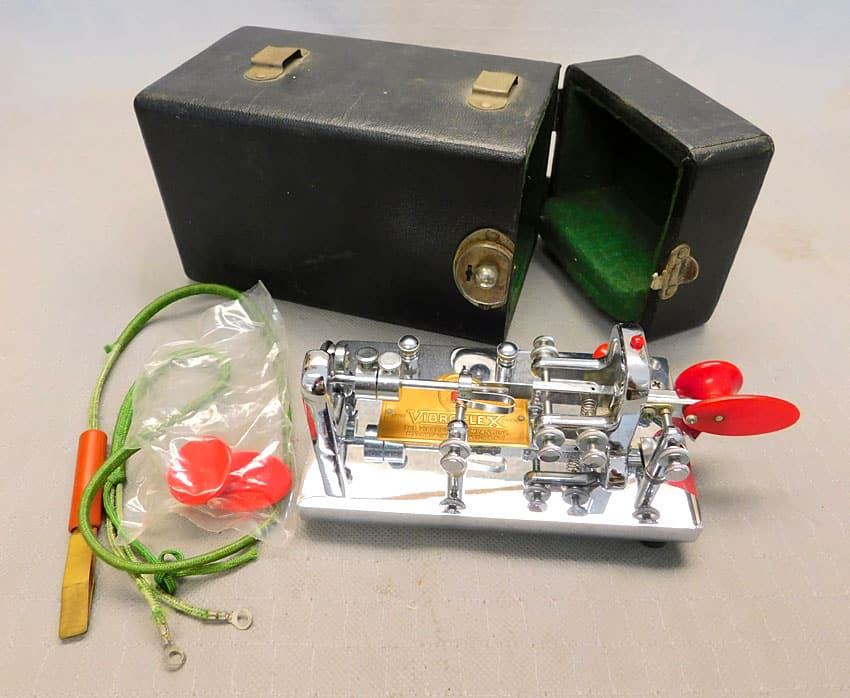
Photo: antiqbuyer.com
Here is a nice mid 1970s Vibroplex Original Deluxe bug – but that’s not the reason I chose this photo. I’m more interested in the carrying case shown at the rear. These cases allowed the travelling telegraphist to carry their prized bug to work, where they would connect it in parallel with the supplied standard straight key, using the wedge cable.
The case in the photo is, like many, missing its leather strap handle, a subject we’ll return to later in this edition of NZ Net News.
* If you have an interesting key for this feature, please send a nice clear photo and a few words describing it.
Quick notes
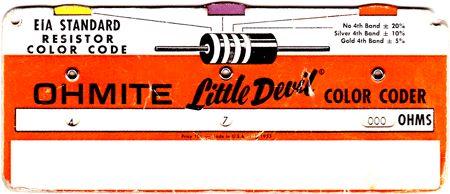 I wonder how many of you have paper-based gadgets such as this in your shack. My well-worn resistor color coder tool is dated “1953” – but is just as accurate as when it was new!
I wonder how many of you have paper-based gadgets such as this in your shack. My well-worn resistor color coder tool is dated “1953” – but is just as accurate as when it was new!
Carbon composition resistors, which have the advantage for some applications of being non-inductive, are getting hard to find – and some resistors being sold as “carbon comp” may not be. Check out this article for the lowdown. And, if you know of a source for good carbon comps, could you let us know, please?
Photo flashback
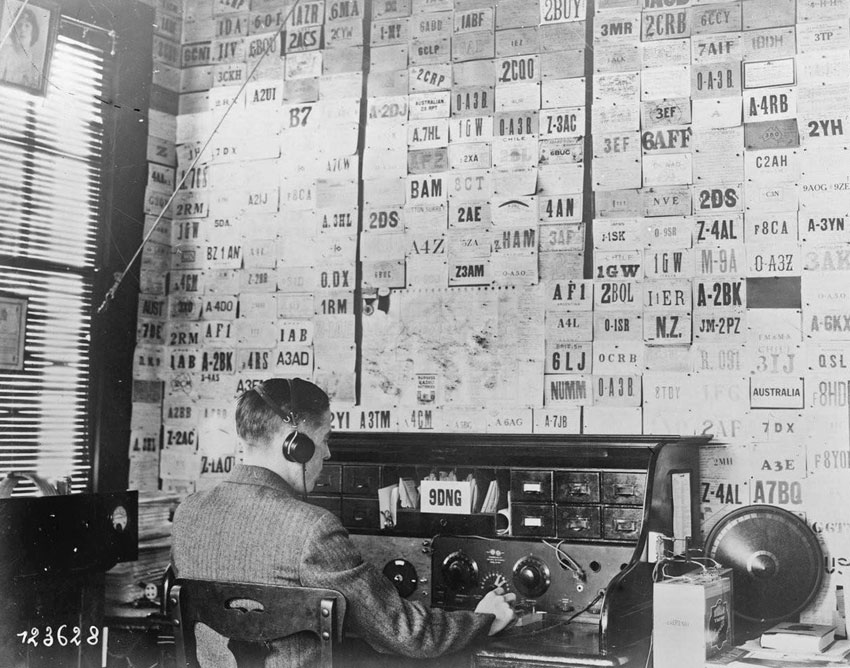
Photo: Pacific & Atlantic photo agency
Here is the very tidy ham shack of Fergus McKeever in Lawrence, Kansas, pictured in 1927. Note the wallpaper, including his NZ Net membership certificate. (OK, I guess it’s just a QSL card from NZ, which is also FB!)
Fixing the TS-440 “display dots”

Photo: OZ1BXM
By Peter Dale VE3EYI
There is a well-known problem which most Kenwood TS-440 series transceivers will develop in their dotage: a dotty display (see photo above).
The radio derives all internal frequencies from a single 36Mhz crystal oscillator by using a clever arrangement of phase locked loop VCOs. If any of the slaved oscillators loses lock, the CPU displays dots on the front panel and deactivates receive and transmit capability.
The TS-440 was manufactured from the mid-1980s to the mid-1990s. I acquired my 440SAT in 2014, s/n 9090902, which puts it toward the end of the manufacturing run. I had no issues with the radio until intermittent dots started appearing about a year ago.
Lars Pertersen OZ1BXM has posted an excellent illustrated PDF with information about the dot and other issues at www.oz1bxm.dk/TS440/TS440S_Repair_FAQ.pdf (See pages 1-9).
When I popped the lid off VCO 5 in my rig, I discovered that the potting compound was milky white, meaning the radio was built after Kenwood stopped using the original brown compound which caused problems. Because my rig’s dots were initially intermittent I tried heating and cooling the top of the PLL PCB, but with no definitive results.
Eventually the dots came and stayed, which made troubleshooting much easier. I identified the VCO which was out of lock but gentle adjustment didn’t work. Finally, I decided to look at the trace side of the PCB to see if there were any bad solder joints. This can be done without removing any connectors, by extracting eight screws on the board, and one screw connecting a grounding wire to the frame.
All solder joints looked solid under a magnifying glass but there was a lot of residual rosin flux, almost as if the board had missed being cleaned after wave soldering. I remembered from my years repairing and manufacturing electronics that rosin is hygroscopic over time and will eventually become a very high value resistor. The PLL VCOs have a high impedance node in the error feedback circuit which, if bridged by a high resistance such as leaky rosin, will force the loop out of lock.
My solution
Apply 99% isopropyl alcohol (available of the shelf at drugstores) to the rosin with a cotton bud in patches and use paper towel to blot the softened residue. Repeat until the blotter comes away clean. I went over the whole underside of the PCB, with the exception of under the two soldered-down metal shields.
After I screwed the board back in place, the dots were gone on power up. I ran the rig continuously for several days followed by several days off and then several days on again and the radio is rock-solid.
This may not be the solution in every case, but if the rig in question has the new potting compound on VCO 5, it is worth checking for excess rosin before attempting the more extreme suggested fixes.
Telegraph Rules
Just in case anyone thought that being a telegraphist in the old days was a simple job…
The New Zealand Post & Telegraph Department’s Telegraph Rules 1957 is a 136-page volume.
Here are just the rules for telegram priorities:
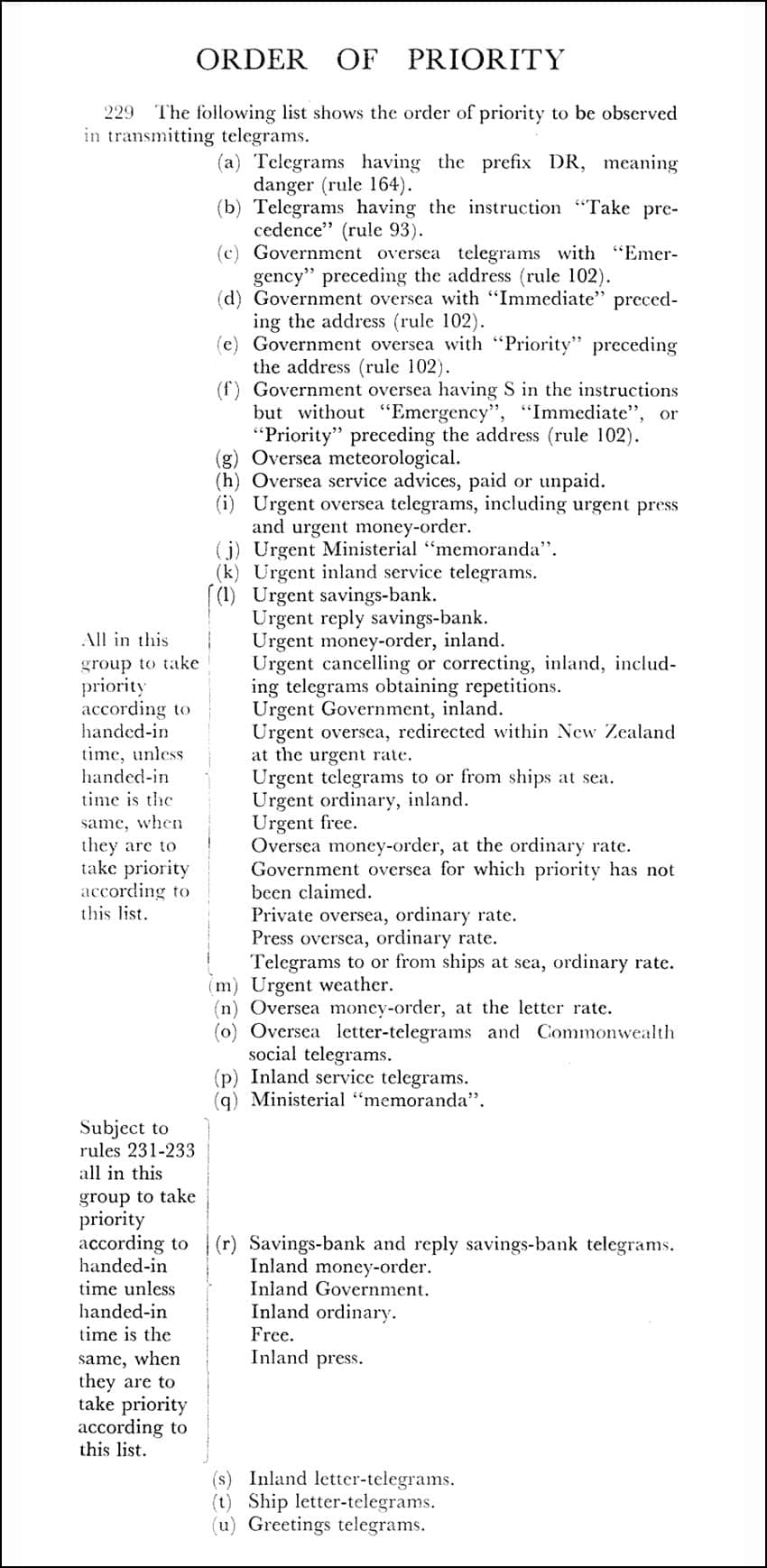
Telegraph Rules. Post & Telegraph Dept, Wellington NZ, 1957
Replacement straps for Vibroplex cases

Photo: Kenneth Crips on Facebook
Although Vibroplex bugs seem to last forever, the carrying cases generally haven’t fared as well. Of course, they were intended to take abuse, so that the precious key inside was protected.

Photo: Brettruns Village
Now, the next problem is how to remove the two metal loop brackets, so that the new strap can be installed. They were possibly riveted on to the top of the case before the case was assembled. Pop rivets would do the job, but would not be as attractive.
I have often thought that there could be a steady business for someone to make faithful reproductions of the original Vibroplex cases, but so far I have not seen anyone doing that.
Morse challenge
Do you know how many stations were on the NZ Net on 20 December 2019? The answer is in the following recording.
Please send your answer (total number of stations on the net) via radiogram or email to ZL1NZ.
Answer to previous Morse Challenge
The stations heard were SPH (Gdynia, Poland), SAG (Göteborg, Sweden), SDJ (Stockholm, Sweden) and IPA (Ancona, Italy). Correct answers were received from VK3DRQ, ZL1ANY, ZL1AYN and ZL2GVA.
Advertising archive
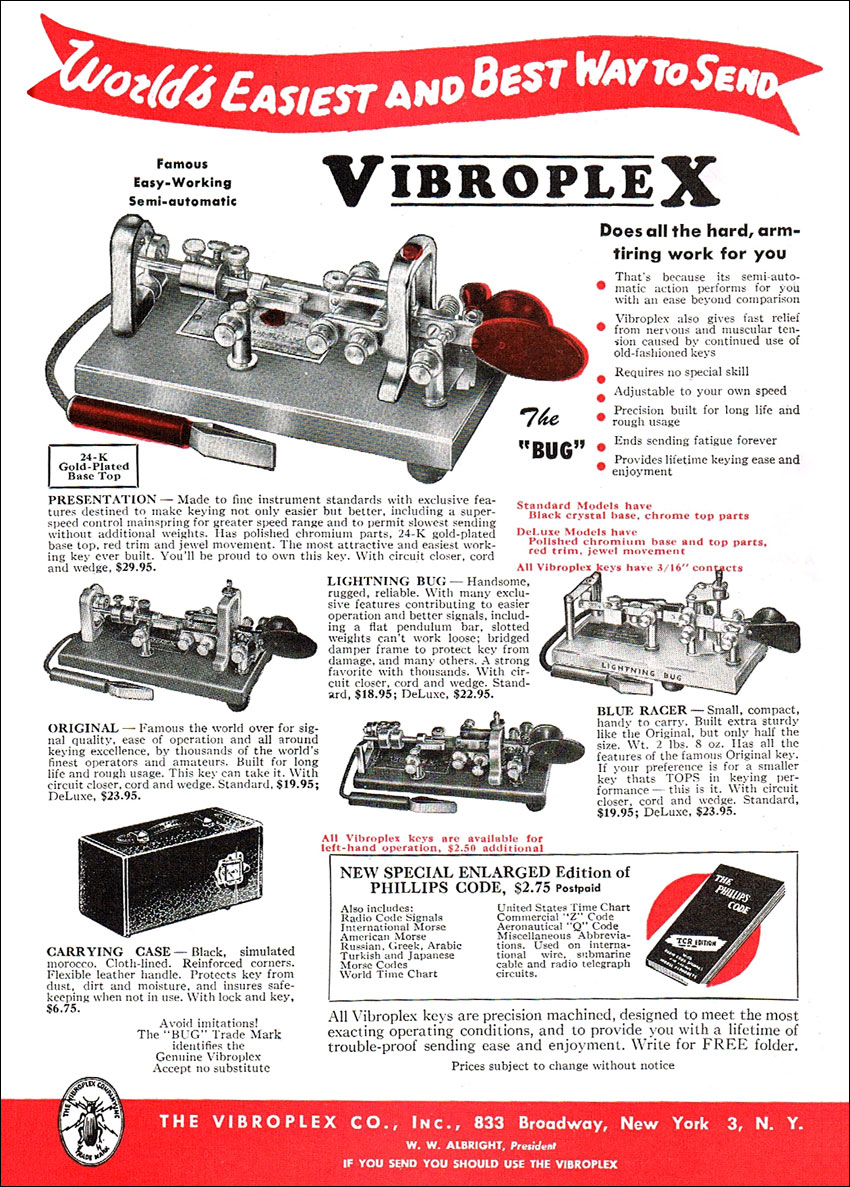
Radio Amateurs Handbook, ARRL, 1957
Suggestions?
If you have suggestions on how to make the NZ Net better, or things you’d like to see covered in these updates, please contact ZL1NZ. You might even like to write something for the newsletter.
Thanks for reading, and I hope to hear you soon on the NZ Net!
—
Neil Sanderson ZL1NZ, Net Manager
New Zealand Net (NZ NET)
3535.0 kHz at 9pm NZT Mon-Fri




